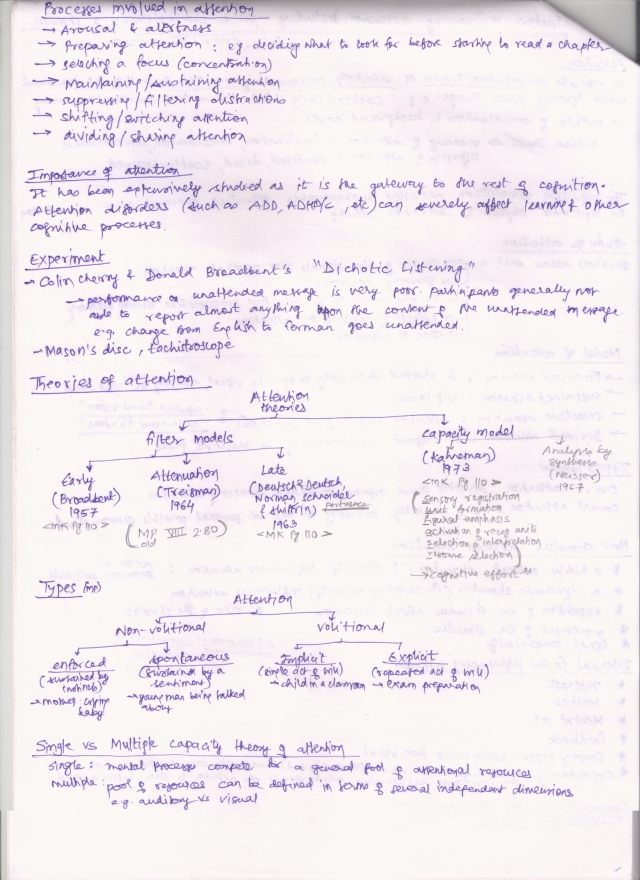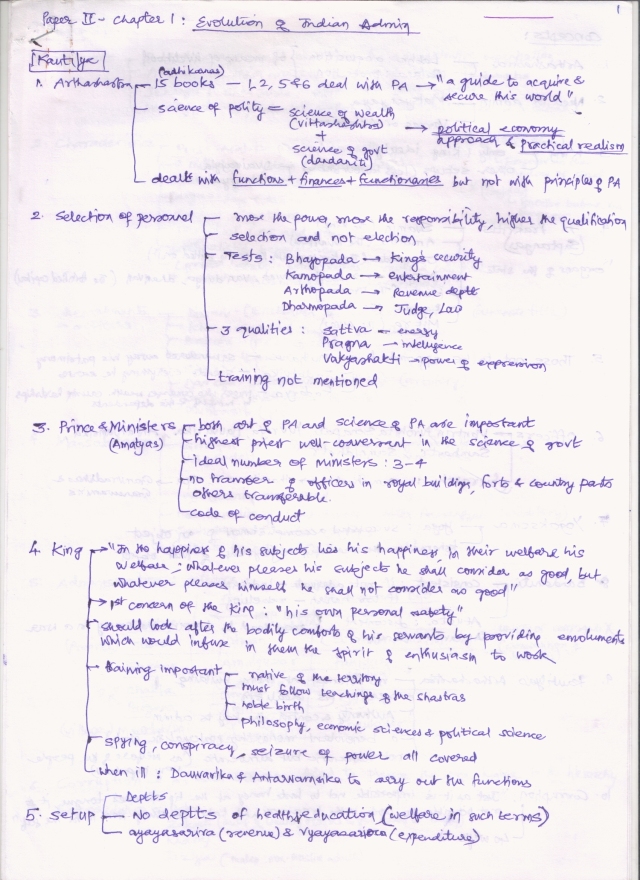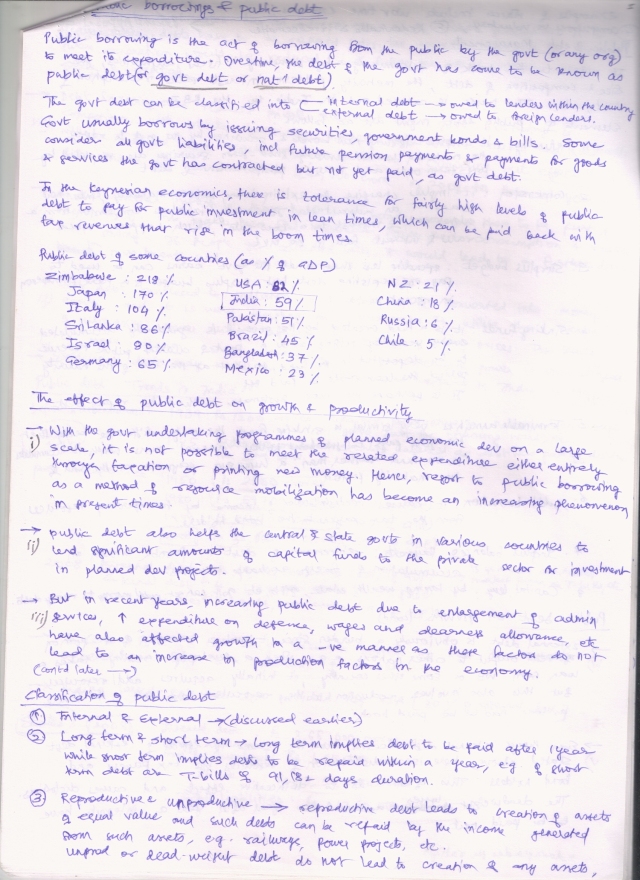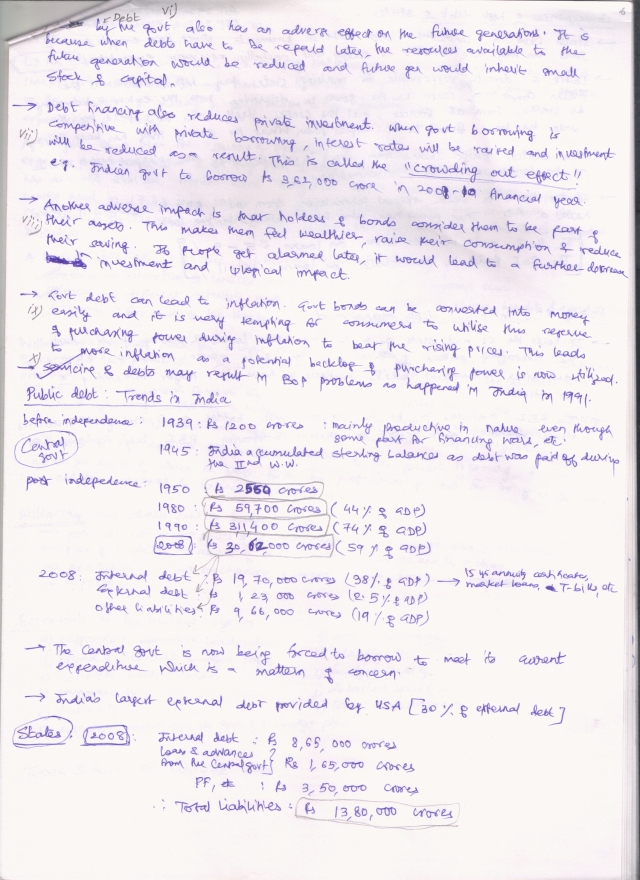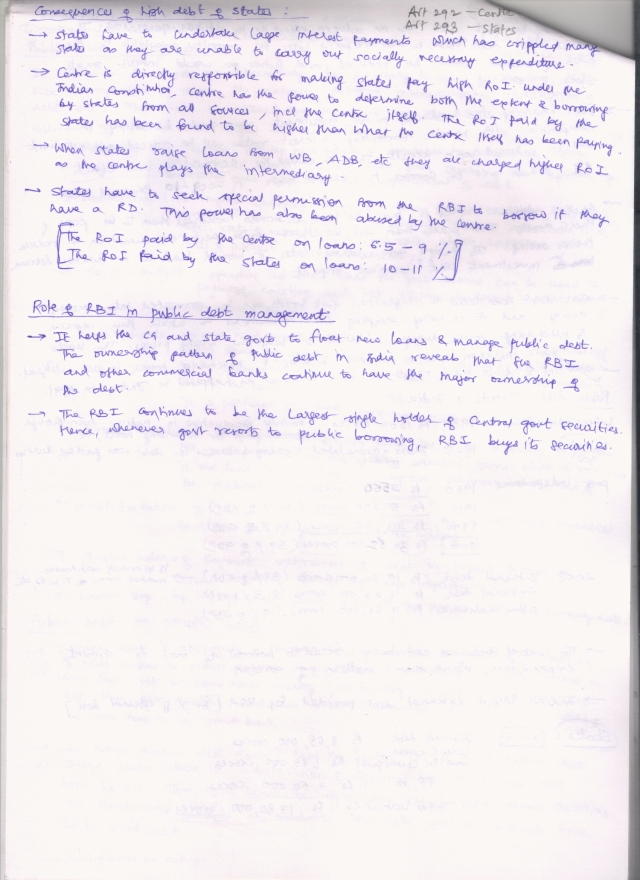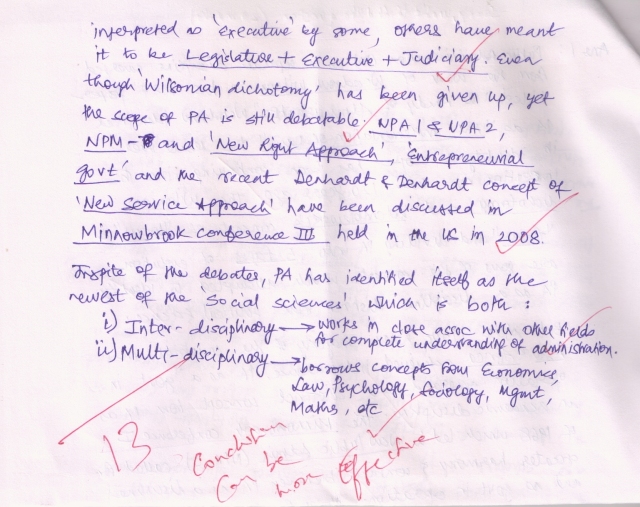I would like to point out a few things before I start. Firstly, as I have always said, it’s better to read one book 5 times rather than reading 5 books once. Whichever book you have selected on a particular subject, keep reading it again and again till you are so thorough that you can point out what is given where.
The tips which I am suggesting here are entirely based on the way I read a particular book. Your style of reading/studying might be very different. So if you have already adopted a strategy, and it is different from mine, kindly ignore what I have to say. The only goal is to complete the book and revise it, whichever method it might be.
The books I am covering here are the ones I have suggested in my earlier posts. They are:
- Bipin Chandra’s India’s Struggle for Independence
- DD Basu’s Constitutional Law of India
- Statistics by Spectrum
- India Yearbook, Min of I&B, GoI
- Civil Services Chronicle (magazine)
- Economic Survey
Bipin Chandra’s India’s Struggle for Independence
The first time I attempted to read this book, I could reach only the 70th page before I surrendered. In my opinion, those who do not have the HABIT of reading books (and I am one of them), will find it very difficult to cover it in one go. So the method was to concentrate on one chapter at a time and adopt a strategy to not only understand but gain an insight as to why the events described happened.
After reading 1 or 2 pages at a time, I thought of the questions which might be asked if the examiner happened to focus on those 2 pages. I made a notebook in which I covered this book chapter-wise. I wrote all the questions from a particular chapter I could think of. This way on an average I made 7-8 questions from each chapter.
For example, when I was reading the chapter on Non-cooperation movement, few incidents were described which forced the launch of NCM. Then the incidents during the movement were described and why it was finally called off. The reaction of various leaders and parties was also covered in the book. So I made 3-4 questions from it such as:
Q. Describe the events which led to the launch of NCM.
Q. How was the NCM different from earlier movements?
Q. Why was NCM called off and what was the reaction to Mahatma Gandhi’s decision?
Q. What was the impact of NCM on Indian National Movement?
This way I could link all the different aspects of NCM and every other movement/ incident. This helps in not only gaining an insight but also remembering the points to write in the exam so as to present a complete answer.
After I finished all the chapters (left one or two in the middle which I found were too specific and hence not useful), I had with me around 230 questions. I went through the previous 10 years’ question papers and was happy to find that not even a single question was asked on INM which was not there in my notebook.
The other thing which I did was to note the name of the persons I came across while reading the book, on the last page of my notebook. So if Indulal Yagnik was mentioned on, say page x and again 300 pages later on page y, I noted it down as Indulal Yagnik (x,y…). This way I could remember everything about the person mentioned in the book as well as relate the events in which the said person was involved.
Whether you finish the book in one go or read it in between other things entirely depends on you. The aim should be to cover it well before the exams and be able to revise the questions you made.
But keep in mind that you should not concentrate only on making the questions. Question-making is only to help you remember the content and relate the events. Concentrate on the content and when you have finished reading all the things which were related directly to each other, then only think of the questions. As I said, I made only 230 or so questions, which makes it 1 question/ 3 pages approximately.
DD Basu’s Constitutional Law of India
I must have read this book at least 10 times during my 3 attempts. It is one of the best books I have come across and certainly THE base book for the Civil Services exam, especially when you have public administration as an optional.
There is no need to remember each and everything given in the book and neither do we have to remember the Articles verbatim.
Instead, focus on the outline of an Article and only in the case of important Articles do we need to remember the details. Important Articles would be FRs, DPSPs, election of the President, CoM, office of profit, budget, CAG, EC, UPSC, FC, emergencies, etc
There are 2 versions of DD Basu available. I had the detailed one. There is another one which is concise. Either will do. But I covered the Articles Part-wise, i.e. Article 1, 2, 3…and so on.
Firstly, I mugged up the Parts of the Constitution. The Constitution is divided into 22 Parts. Remembering the Parts helps in recalling the Articles quickly. So I remembered that Part III is FRs (Articles 12 to 35), Part V is The Union (Articles 52 to 151), Part XVIII is Emergency Provisions (Articles 352 to 360), etc
Then I started with the Articles. I covered 20 Articles at a time and continued revising them till I was able to recall all 20 without looking in the book. Then went ahead and after I had finished first 50 Articles, tried to recall all 50 in one go. Then first 100 and so on.
As I said, no need to remember the Articles verbatim. You need to know that Article 72 is regarding the power of the President to grant pardons and roughly in what kind of cases, i.e. court-martials, death sentences and cases to which the executive power of the Union extends.
This way I remembered around 400 of the 440 or so Articles in the Constitution and left the ones I considered not important, especially the ones in the end.
Shortcut: One of them is that many Articles of the Union correspond to Articles of the States. So from Article 72 onwards add 89 to get the corresponding Article at the State level. Keep doing it till Article 111. Article 201 is extra which relates to the President’s powers when a Bill has been reserved for his consideration by the Governor under Article 200. So after this, from Article 112 onwards add 90 to get the corresponding Article at the State level.
I concentrated on the Constitution as many of the questions can be answered through the Articles in the Constitution by directly quoting the Articles in the introduction part of the answer.
No need to go too deeply into the explanations provided in the book. Just read them for understanding what the Article is about. Thereafter, you can leave it out when you revise. Also, there’s no need to remember all the cases relating to various Articles. Only very important ones such as Golak Nath, Keshvananda Bharti, Minerva Mills, etc and the recent IR Coelho, TMA Pai, PA Inamdar, etc need to be remembered.
Also, only the important Amendments such as 42nd, 44th, 86th, etc and the recent ones 91st, 92nd, 93rd and 94th need to be remembered.
For more on the Constitution, refer http://indiacode.nic.in/coiweb/welcome.html
Statistics by Spectrum
One of the biggest mistakes which many commit is merely “reading” the questions in the book and not practising the statistics questions by attempting them in an exam-like situation.
I remember in XI standard when we had vectors. I just read the questions in R D Sharma and they appeared to be very easy. However, in the test when I attempted the questions, I couldn’t even go beyond the 1st step. Same is the case with statistics. If you think questions are very easy, most often than not, when you attempt the questions in an exam-like situation, serious doubts are going to emerge.
Keeping the above point in mind, covering the book on statistics by spectrum is more than enough. Statistics was my strength in the 2nd paper and therefore, first analyze your ability, and then try to execute your plan.
The basic thing to remember is that 80% of the questions asked in a particular year are repeated ones. They might change the numbers, etc but the graph/diagram more or less remains the same.
Statistics in 2009 was the easiest compared to 2007 and 2008 (2008 was the toughest according to me), and the only thing to guard against was the time factor as the graphs and questions were very simple, but at the same time, very lengthy. In such situations, always take a scale such that the bars will be small and shading, etc should be done freehand.
The method which I adopted to cover spectrum was based on the decision that I would practice/ go through statistics thrice-
- In July, I would read as well as practice some of the questions
- In October, I would mostly read yet, solve few of the questions
- On October 23rd, during the time between the 2 papers, I would revise statistics as I always started GS II with statistics.
July:
I went through the basics given in spectrum, such as the definitions, different types of bar diagrams, area diagrams, ogives, tables, etc. Thereafter, I went through the sample questions and made it a point that I would READ 2 questions and SOLVE the 3rd question. Always solve the question in an exam-like situation, with pencil, scale, graph paper, etc.
I applied the same rule to all the previous years’ question papers given in the book. Every year, 1 or 2 questions are asked which are different from previous years. I noted such questions on the front page of the book, as page 97- q 6…and so on…
At the end of this exercise, I had a list of around 100 questions which I would again read/solve in October along with revising the basics.
October:
I went through the basics again and went through the 100 questions which I had identified as “different” from previous years’ papers. I again applied the rule of READING 2 questions and SOLVING the 3rd one. At this point of time, I was comfortable with most of the questions and formulae and ticked the questions which I felt I should revise again just before the exam. So I shortened the revision list to about 30 questions.
October 23rd:
During the time between the 2 papers, I revised the basics in 10 minutes (I had written all the different types of graphs/diagrams and formulae on a paper) and READ the 30 questions from my list. This way I went into the exam-hall in the statistics “frame of mind” and attempted the questions straightaway.
This is one of the reasons why I said earlier in the importance of mains post that howsoever the earlier papers go: good or bad, always concentrate on the next paper and prepare yourself for it.
India Yearbook, Min of I&B, GoI
Before I begin, I would like to point out that this book should be read thoroughly only for the prelims. For the mains, only government programmes and few chapters need to be covered.
So if you are taking the prelims in 2011, go through the whole book. But if you are going to take the Mains in 2010, no need to cover the whole book at present.
For prelims
GS prelims in 2008 and 2009 had many questions directly asked from the India Yearbook. The only issue was that any line from any page was turned into a question. So a true or false statement such as salt water crocodiles are found in Andaman and Nicobar islands was from the 1st chapter Land and the People (under Fauna).
Therefore, I covered all the chapters in the book except the one on States and UTs (Chapter 30 in 2010 Yearbook).
I put a lot of emphasis on making notes as it is very difficult to cover a 1000 page book in 3-4 days in the last month or week before the exam. Moreover, 99% (or even more than that) of the India Yearbook remains the same year after year.
So I went through the India Yearbook 2009 and reduced it to 1/10th of its size by making notes. Special attention needs to be given to the following things:
- Government programmes: write on a paper at the end of the book all the government programmes you come across. Mid-day meal scheme may be described on page x and again 400 pages later on page y. So I noted it as Mid-day meal scheme (x, y…)
- Agricultural data is presented very nicely. I wrote on a paper all the values. So rice: 97 million tonnes, wheat: 74 million tonnes, eggs: 46 billion, banana:1st, grapes/area: 1st, etc can be easily mugged up.
- Various government institutes/ bodies are specified such as NSD, ASI, ZSI, National Library, National Museum, NBT, KCCs, etc. I noted the names and page number on a page and their HQ (if any).
- Factual data such as India’s land area, EEZ, land frontier, coastline, energy production, major and minor ports, international airports, teledensity, etc need to be noted.
For mains
If you already read the IYB for prelims, just go through what you underlined and revise your notes. But if you did not, then apart from the GOVERNMENT SCHEMES and agricultural data, read the following chapters from IYB 2010:
Chapters 1, 2, 3, 5, 7, 10, 11 (NCES only), 13 (terms like FIPB, FCCB, ECB, ADR/GDR, FDI, etc), 18, 24, 25 and 28.
Note: I have not specified chapters 16, 17, etc as I have assumed that you must have covered all the government schemes such as NRHM, JNNURM, etc irrespective of where they are given in the book.
In Mains 2009 many questions could be answered on the basis of information provided in the IYB, e.g. significance of coastal regions, UMPPs, BSUP, fruit production in India and NNRMS.
But if you don’t have time, newspapers should be preferred over standard books such as the IYB.
Civil Services Chronicle (magazine)
Since I read the Civil Services Chronicle, I am going to give some tips on how to go about it. If you read some other magazine, not a problem. You may apply the same strategy if you want to.
Regarding CSC, it’s important because newspapers are not Civil Services exam oriented. So they are bound to miss a few things which may be important for the exam. Also, it is sometimes possible that you might miss out on an important development, such as an appointment, etc. So reading CSC (or any 1 exam oriented magazine) is beneficial.
I always aimed at finishing the chronicle in a day or two (apart from newspaper reading on that day). If you find it time-consuming, always keep in mind that 3 days is the maximum time you should be spending to go through an issue.
My strategy to go through CSC was as follows:
- While reading it, tick mark the articles which are good as many times articles too specific to a given place or even issues with very little probability of being asked in the exam are covered. While reading, underline the important lines then and there. Concentrate only on the facts and not what should be done, what is good, what might happen, if, but, etc.
- I used to write on a paper all the important issues (just the heading and page number) and on another paper the names of all the important persons mentioned in the issue which could be asked in the exam. For example, winners of Bharat Ratna and Padma Vibhushan are important, but there’s no need to remember about each and every person who has won the Padma Bhushan or Padma Shri. Similarly, winners of Nobel Prize, Magsaysay Award (only if given to an Indian), Jawaharlal Nehru prize for international understanding, etc are important, but not some obscure science award or social service award or Magsaysay award to someone from Malaysia, Thailand or Philippines.
REVISION of the issues just before the exam is very important. Just one reading wouldn’t do any good. So revise only what you have marked and only the articles which you have written on the page. 3 issues of the magazine should be covered in 1 day while revising (apart from newspaper reading/revision) or it’s going to be unmanageable.
Economic Survey
You should aim at finishing the Economic Survey in 4 days (apart from newspaper reading on those days). Only 10-15% of it is useful for the exam.
- If you feel you need to improve your knowledge of economics, take note of the terms you come across. For example, in ES 2009-10, page 2 has terms such as GDP at factor cost, broad money, capital formation, RD, FD, PD, current account balance, etc. If you do not know what they mean, look up on the net. No need to remember their values and advanced estimates etc. for all the years. Just remembering the last year’s actual values would suffice.
- Concentrate on the boxes. But do not pay attention to tables such as the one on page 3. No need for such in-depth knowledge.
- Pay special attention to the steps recommended by various bodies to the government. Example, 13th FC on page 18, UID on page 26, boxes on pages 30 and 34, measures to control inflation on page 75, etc.
- Terms used in between such as CoP 15 on page 19, Project Arrow on page 57, NHB Residex on page 72, BPLR and FCNR(B) on page 94, etc should not be missed.
- Do not even look into the statistical appendix.
- Most important chapters: 1, 2, 6, 8 and 11.
Do not forget to REVISE what all you have marked at least twice before the exam. Therefore, whichever book you select for any given subject, keep in mind that it should be read at least 3 times.












